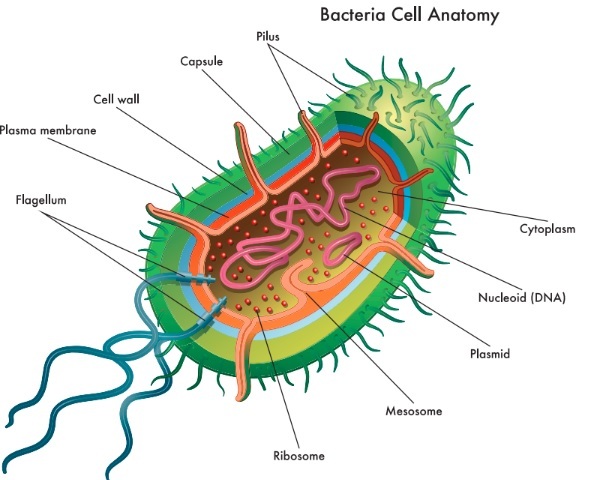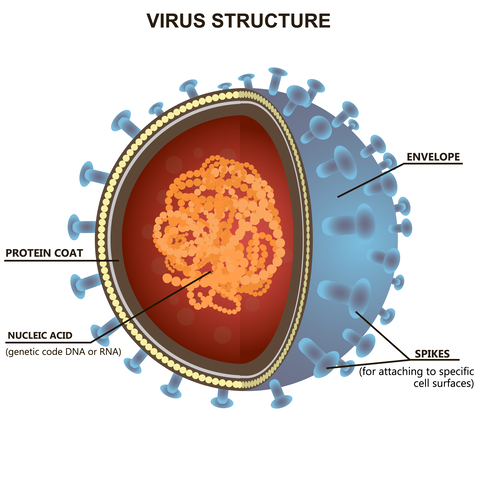
 Data Structure
Data Structure Networking
Networking RDBMS
RDBMS Operating System
Operating System Java
Java MS Excel
MS Excel iOS
iOS HTML
HTML CSS
CSS Android
Android Python
Python C Programming
C Programming C++
C++ C#
C# MongoDB
MongoDB MySQL
MySQL Javascript
Javascript PHP
PHP
- Selected Reading
- UPSC IAS Exams Notes
- Developer's Best Practices
- Questions and Answers
- Effective Resume Writing
- HR Interview Questions
- Computer Glossary
- Who is Who
Principles of Bacteriology and Virology
Introduction
A Branch of microbiology dealing with the study of bacteria is called bacteriology. Virology is the scientific study of biological viruses.
The beginning of bacteriology and the invention of the microscope happened simultaneously. The Dutch biologist Antonie van Leeuwenhoek, who reported certain animalcules, as they were then called, in water, saliva, and other fluids in 1683, is likely the first person to have observed microbes. They had been observed using a straightforward lens with a 100-150 diameter magnification.
When virology was founded, there were no techniques for reproducing or observing viruses, and there were no specialized laboratory tests for viral infections. There were no techniques for isolating viral nucleic acids (RNA and DNA) and proteins, which are now virology's cornerstones. There are many techniques available today for studying the structure, operations, and individual components of viruses.

Definition of Virology
The study of living viruses is known as virology. It is a branch of microbiology that focuses on pathogens' detection, structure, classification, and evolution, as well as their methods of infection and use of host cells for reproduction, interactions with the physiology and immunity of the host organism, diseases they cause, methods for isolating and cultivating them, and applications in research and treatment.
Definition of Bacteriology
The field of biology that focuses on studying the morphology, ecology, genetics, and biochemistry of bacteria is known as bacteriology. The characterization, categorization, and identification of bacterial species are included in this, it's a branch of microbiology.
Structure and Function of Bacteria
Bacteria are prokaryotic organisms with only one cell. Internal bacterial cell structure is simpler. The mitochondria, lysosome, Golgi, endoplasmic reticulum, chloroplast, peroxisome, glyoxysome, and true vacuole are all absent from it. Moreover, bacteria lack genuine nuclei and nucleoli that are membrane-bound. Nucleoid is the name for the bacterial nucleus.
Classification of Bacteria
Gram staining and morphology are two of the most crucial classification systems for bacteria. In terms of form, bacteria are divided into three main groups: cocci, which are spherical in shape; bacilli, which are rod-shaped; spirals; and vibrio, which are comma-shaped.
It is simpler to recognize bacteria using this classification system based on their general look (shape) and growth requirements. On the other hand, Gram staining enables the identification of the peptidoglycan type of bacteria.
Morphology and Classification
They have four primary shapes: spiral, arc, rod-shaped (bacilli), and spherical (cocci) (spirochete).
Bacteria are classified as follows according to their needs for growth:
- Facultative anaerobes - Can grow in high or low-oxygen environments
- Strict anaerobes - Only grow in areas with minimal or no oxygen
- Strict aerobes - Require oxygen for growth
- Microaerophilic - Bacteria that grow well in very little oxygen
Meanwhile, some bacteria are Gram-positive (bacteria with a thick covering of peptidoglycan on their cell wall), and others are Gram-negative (bacteria with a very thin layer of peptidoglycan).
Different Branches of Bacteriology
Basically, medical bacteriology is a subfield of bacteriology that focuses on bacteria that cause illness in humans. It involves finding and identifying different bacterial infections and the ways in which they cause different diseases.
Medical bacteriology also includes the study of the immune system to some extent, which has allowed for the development of methods for enhancing natural immunity.
Other subfields of bacteriology that are closely related to medical bacteriology include food and water bacteriology.
Food, which is a vital component of life, can also act as a carrier for a variety of bacterial illnesses and intoxications.
What Are Viruses?
Some of the features of viruses include -
- Can only reproduce in living cells (via synthesis and assembly).
- Contain DNA, RNA, or occasionally both.
- Are incapable of reproducing sexually or in an asexual manner.
- These are acellular particles that lack the cytoplasm and regular cell organelles and are not cells.
- In Comparative to other single-celled organisms, they are extremely tiny.
- These are parasites whose ability to reproduce solely depends on live cells
Structure and Function of Viruses
Viruses are extremely small, with sizes between 30 and 50 nm. In contrast to having no cells and frequently having no cell wall, viruses are encased in a layer of a protective protein called a capsid. It has a genetic component and is distinguished by the coevolution of the host and the virus. The genetic material in them is either DNA or RNA.
In order to propagate, viruses primarily rely on hosts to provide the sophisticated metabolic machinery of prokaryotic or eukaryotic cells.
The virus's primary function is to deliver its DNA or RNA genome to the host cell, where the host cell can then transcribe it.
A symmetric protein that has been capsuled contains the viral genome structure. The nucleoprotein, also referred to as the nucleic acid-associated protein, creates the nucleocapsid, which contains the genome.

Classification of Viruses
Viruses can be categorized primarily based on their behavioral traits, core contents, chemical composition, capsid structure, size, shape, mechanisms of replication, and other viral genome structures.
The system of virus classification is most frequently studied using the Baltimore classification. American biologist David Baltimore created this system in the 1970s, for which he was given the Nobel Prize.
The classification of viruses according to their various criteria is described in the following virus information.
DNA Viruses
The viruses, which have DNA as their genetic material are called DNA viruses. There are two different types of DNA viruses.
- Single-stranded DNA viruses like Picornaviruses and Parvovirus.
- Double-stranded DNA viruses like Adenovirus and Herpes virus.
RNA Viruses
The viruses which have RNA as their genetic material are called RNA viruses. There are two different types of RNA viruses.
- Double-stranded RNA virus. Example Reovirus.
- Single-stranded RNA virus.
It is further classified into two Positive sense RNA (+RNA) and negative sense RNA (-RNA). Polioviruses, Hepatitis A, Rabies virus, and Influenza virus are examples of single-stranded RNA viruses.
Classification Based On Structure and Symmetry
Viruses have different shapes and structures, like helical and icosahedral shapes. Classification based on different shapes and symmetry of viruses is as follows:
- Complex virus. Example-Poxvirus.
- Radial symmetry virus. Example-Bacteriophage.
- Cubical or icosahedral symmetry-shaped virus. Examples - Reovirus, Picornavirus.
- Rod or Spiral shaped or helical symmetry virus. Examples - Paramyxovirus, orthomyxovirus.
Different Branches of Virology
The fact that viruses cause a variety of contagious diseases in both plants and animals is a major driving force behind the study of viruses. Viral pathogenesis is the study of how viruses spread disease.
A virus's pathogenicity refers to the degree of disease it may spread. Plant virology, animal virology, and human or medical virology are the different branches of Virology.
The study of viruses at the level of their nucleic acids and proteins is known as molecular virology. All of the techniques developed by molecular biologists have been effective in virology.
Conclusion
Bacteriology involves identifying and locating different bacterial pathogens as well as the ways in which they cause different diseases. Immunology, microbiology, molecular biology, genetic engineering, etc., are the areas where viruses have been employed in research in a variety of ways. As they may introduce content (DNA, RNA) into host cells, viruses are frequently used as vectors in research procedures involving recombinant DNA technology.

